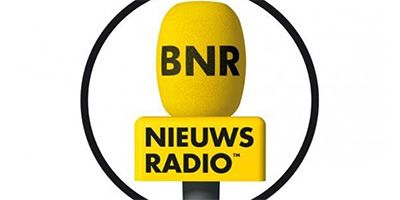
“The advertising world is in a fatal creativity crisis.”
With this statement, marketing scientist Orlando Wood (System1) sounded the alarm in 2019 with his book ‘Lemon. How the Advertising Brain Turned Sour’. In the book, he describes how creative and bold advertising is increasingly being replaced by an uninspired approach. This approach results in rational, abstract, and downright forgettable advertising: deadly for impact.
And then... silence. For a long time. Until Paul van Kuilenburg (Alfred) reignited the fire in 2021 with an article on Adformatie: “I am writing this piece because I feel like everything is on fire while everyone is looking the other way.” A striking statement, because since that blog, the topic has appeared more and more on the agenda of marketing-related media and events.
But what exactly is the problem with contemporary advertisements? Why is this detrimental to effectiveness? In this blog, we take a neuroscientific look at the creativity crisis in advertising.

Advertising is Becoming More Superficial
Which commercials do you still remember from the past? Chances are you’re thinking of the strong story-driven commercials, unique characters, and settings etched in your memory. And that’s not without reason, because research by Orlando Wood shows that these advertising factors contribute to campaign recall and impact.
The downside? These proven success ingredients are being used less and less in advertising campaigns.
Everything for Everyone
In today’s multimedia world, brands prefer campaign concepts that can easily be moulded to fit any conceivable social media platform. For this reason, we increasingly see superficial campaigns, where the words from the briefing are quite literally recited, often supported by a monotonous rhythmic soundtrack and images that could just as easily have been edited in reverse order.
The message is increasingly a variation on “We are everything for everyone.” I only realised how persistent this problem is when I saw the montage of contemporary campaigns below. (Thanks to Paul van Kuilenburg, who shared this montage in his original blog on Adformatie).
Advertising Contains Less and Less Emotion
Wood notes that advertisements contain fewer stimulating, emotion-rich elements, such as storylines, memorable characters, and detailed environments. He calls this a decline in ‘right-brained’ advertising elements. There is much to criticise about this lateral division (“left = rational” and “right = emotional”) from a neuroscientific perspective, but let’s consider it a useful metaphor for the decline of creative ingredients in advertising. Because in this, the brain also agrees with Wood.

When we look at the graph above, there has been a drastic decline in creative (‘right-brained’) features since 2005. Let’s practically dissect this development in five areas: storyline, characters, music, environment, and approach.
Storyline: Narrative vs. Slices
One of the biggest (and according to Woods most deadly) trends in advertising is that many ads no longer contain a storyline at all.
Traditionally, advertisements wove their message with a compelling narrative. These didn’t have to be stories of epic proportions. On the contrary, they were often small yet memorable moments. But always with a beginning, middle, and end.
The narrative campaign is threatened with extinction in 2022. Ads now show a collection of scenes, each separately intended to support the message or product. Attractive images, but they could often just as easily be cut up in random order. There is no structure. That’s precisely what makes them favourites with brands: the less narrative, the more flexible one basic expression can be converted into separate expressions for online, social, and TV.
The Brain Loves Stories
Although a storyline is not a prerequisite for a successful commercial, the brain is clearly charmed by stories. Not surprising, since our ancestors in antiquity shared their stories around the campfire, our brains have been attached to the story as a carrier of information.
Although narrative commercials are becoming increasingly rare, there is one time of year that is an exception: December. During the cosiest month of the year, brands tumble over each other for a strong piece of storytelling. Many of them are forgettable attempts to warm our hearts, but the real narrative masterpieces linger for a long time.
It shows that the narrative advertising technique is the sharpest tool in the advertiser’s drawer: you can cut a razor-sharp message with it, but in the wrong hands, it can cause ugly injuries.
Characters: Characterful vs. Interchangeable
With the implosion of narrative commercials, the advertising character is also dead and buried. Instead, advertisements also choose the “we are everything for everyone” route here (scroll back to the video above to see the result).
Don’t confuse ‘characters’ with ‘people’. There is no shortage of people in advertisements, but characters are rare.
Even when a character does appear in an advertisement, they are generally less pronounced and detailed. Advertising characters stuck because of their memorable quirks. The outburst of anger from Peer Mascini when the Melkunie cow photobombs him. The lisp of the boy who was called sir at the counter of a fast-food chain.
Brands today find those characterful details scary. They prefer to portray their target audience as broadly and generally as possible. In their – by the way, commendable – quest for inclusivity, today’s advertisements emotionally exclude us.
Environment: Context-Rich Location vs. Abstract Backgrounds
Advertisements are becoming flatter. Literally.
More than before, advertisements are provided with abstract backgrounds and environments. People are less often shown in a detailed and believable living environment but seem to live in an abstract alternative universe. Take a look at the following GoDaddy commercial.
We see flat coloured backgrounds, fast texts, and 3D animations. The makers are certainly skilled in Adobe After Effects, but have little understanding of consumer psychology.
Unfortunately, there is increasingly a lack of – to put it in filmmaker terms – a sense of place. The environments feel abstract, clinical, and digital.
Art directors face the challenge of creating worlds that transport the viewer to another reality for 30 seconds. That they can do this excellently is evident from the high-quality offerings in film and TV. The problem is not in the talent on the creation side, but rather in the brands by whom they are hired. They want the message “we are everything for everyone”, and such a hollow message is easier to convey on a flat background.
Music: Melody vs. Beat
Woods also detects a change in music that cools our emotions: less melody, more rhythm. Today’s soundtracks have less melodic development, but a monotonous repeating rhythm.
The loss of melody surprisingly aligns with the disappearance of story and characters. Where melody forms emotion-enhancing accompaniment for a storyline, a simple repeating rhythm is the perfect companion for a storyline-less expression. After all: today’s commercial is “everything for everyone”. And that is easiest on a beat that also lacks an emotional beginning and end.
Is Lack of Melody Really Fatal?
The question is to what extent our brain is really more attracted to melody than rhythm. It is possible that we are dealing with a spurious correlation: mediocre advertisements tend to rhythmic music, but rhythmic music does not necessarily make an advertisement mediocre. Rhythm is simply easier to combine with a sequence of random scenes.
Gratis Webinar: "De Creativiteitscrisis in Reclame 🧠"
Reclames slagen er steeds minder in de emotionele gebieden in ons brein te kietelen. Maar wat maakt reclames vandaag de dag precies zo emotieloos? En met welke ingrediënten kunnen we het emotionele vuur weer aanwakkeren?
Tijdens dit webinar leer je:
👉 Waarom emotie zo belangrijk is in reclame
👉 Hoe je emotie juist wél prikkelt
👉 Hoe je emotie meetbaar maakt
De 60 minuten durende webinar is nu terug te kijken!
Bekijk de webinar via deze link. <
Message: Emotional vs. Rational
What is the cause of the declining creativity in advertising? What leads to the fact that story, characters, environment, and music resonate less emotionally?
I do not blame the advertisers. The creative sector is brimming with talent. The problem is that brands with their campaign briefings make little use of that talent.
The reason, in my opinion, is a too strong focus on the short term. Brands derive the effectiveness of their campaign from banal and easily measurable metrics and want to achieve them as cheaply as possible. The result is rationally conceived campaigns, where the voice-over seems to shamelessly recite the briefing. There is mainly attention to elements that drive clicks (because they are easily measurable).
But does the expression also ignite the emotional fire in our heads?
Neuro Makes Emotion Measurable
The hyperfocus on rational metrics (from click-through to message comprehension) has led to ultra-rational commercials. For a long time, it was also not possible to measure emotional impact well. Surveys gave a limited picture. In fact, consciously surveyed metrics often show rational commercials in a good light, while this is not really the most favourable for the brand.
Neuromarketing research with Eye Tracking and EEG (brain activity) now makes it possible for the first time to objectively measure the emotional response to an advertisement. In particular, we look at:
- Desire: degree of positive emotion
- Engagement: degree to which the viewer is carried along by the communication
These two metrics together provide a good picture of the emotional performance of an expression. And then the winning advertisements turn out to use transformative techniques above average. And those are precisely the advertising ingredients that have become increasingly rare in recent years: storylines, characters, believable settings, and melodious music.
Marketing Scientists Embrace Creatives
Orlando Wood’s work is gaining more and more support. Never before have marketing scientists and creatives agreed so strongly with each other. They both think it’s time for a creative renaissance in the advertising profession.
The party now in the lead in this renaissance is the brands themselves. And fortunately, we also see them realising that rational short-term metrics do not provide a good reflection of advertising effectiveness. It is emotion that makes people choose a brand. So it’s time to breathe new life into emotion-driven advertising.


 EN
EN  NL
NL 




